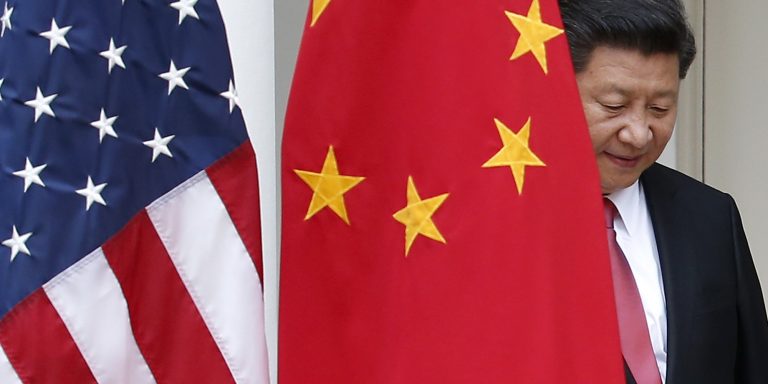INTELBRIEF
June 27, 2018
IntelBrief: China and the U.S. on a Perilous Course

- On June 26, U.S. Defense Secretary Mattis visited Beijing, the first such visit in four years.
- In the four years since the last visit, the U.S. and China have moved into a more openly tense military and geopolitical environment.
- In particular, China’s moves to expand and solidify its military capabilities in the South China Sea are an unavoidable reality the U.S. is now facing.
- Despite U.S. objections, China considers its actions in the South China Sea to be a fait accompli and essentially non-negotiable.
.
As China and the U.S. appear to be on a path for a trade war, their respective militaries eye each other with increasing wariness. This caution is an inevitable yet manageable tension arising from China’s ongoing push to expand its military capabilities and footprint in what it considers to be its historic and future sphere of influence: the South China Sea. The prospect of intentional military conflict between the world’s two largest economies is much less than the chance of economic conflict. Yet the prospects, while unlikely now, increase every year as China literally remakes the map—by building artificial reefs from which to expand territorial claims in hotly disputed regions—and the U.S. continues its role as the protector of trade routes through the use of its navy, a role it has held since 1945. As the two forces begin to occupy the same space, tensions build.
Seeking to better understand those tensions, and how to manage what looks to be an inexorable shift in the power dynamics of the South China Sea, U.S. Secretary James Mattis visited Beijing on June 26, 2018. This is the first visit by a U.S. Secretary of Defense to China in four years. The visit comes a month after the U.S. rescinded China’s invitation to participate in Rim of the Pacific (RIMPAC), the largest multilateral naval exercise that is just now underway and that will conclude in early August. RIMPAC 2018 will include 45 surface ships, five submarines, and more than 200 naval aircraft from 26 countries. Many of these countries, such as Vietnam, Japan, South Korea, the Philippines, and the U.S., are growing increasingly concerned over what the U.S. has said is ‘China’s continued militarization of disputed features in the South China Sea.’
China objected to the dis-invitation, calling the decision a ‘very un-constructive move.’ In response to U.S. criticism, China points out that its efforts pale in comparison to U.S. forward-deployed military forces in the region, a region that is far from U.S. shores yet next door to China. China is not going to reverse its decision to press ahead and expand its military presence in the South China Sea, to include claims on The Spratly Islands and Woody Island. Likewise, China is not going to back down in the East China Sea, where its claims over the Senkaku/Diaoyu Islands are a source of major concern for Japan.
Given the importance of the sea lanes that run through the South China Sea, the U.S. must find a way to maneuver – avoiding conflict with an assertive China while seeking consensus where possible. Every country in the region has specific concerns over China’s growing influence and military build-up, and is working with the U.S to counter the tensions while not overly antagonizing China. This will become increasingly difficult to sustain, and tensions between the U.S. and China over tariffs and trade will only add to the difficulties.
.
For tailored research and analysis, please contact: info@thesoufancenter.org
[video width="960" height="540" mp4="https://thesoufancenter.org/wp-content/uploads/2018/06/IB-0627.mp4" poster="https://thesoufancenter.org/wp-content/uploads/2018/06/AP_472166086306.jpg"][/video]